Analysis of the Compressive Behavior of Plywood Under Seawater and Cryogenic Temperature Effects
Abstract
:1. Introduction
2. Background and Problem Description
2.1. Background
2.2. Problem Definition
3. Experiments
3.1. Materials
3.2. Compression Testing Apparatus and Method
3.3. Specimen for Immersion Condition
4. Results and Discussion
4.1. Effect of Room Temperature on Different Immersion Conditions
4.2. Effect of Cryogenic Temperature on Different Immersion Conditions
5. Conclusions
- Seawater immersion resulted in a 10–13% increase in compressive strength after 3 h, with the rate of increase diminishing over time, likely due to osmotic dehydration-induced shear stress.
- Saltwater immersion produced a moderate strength increase of approximately 10% after 3 h, whereas distilled water immersion led to an 8–10% decrease in strength over the same period.
- Under cryogenic conditions, plywood immersed in seawater and saltwater for 3 h exhibited a strength increase exceeding 10%; however, the strength gradually declined with extended immersion time.
- Cryogenic temperatures significantly enhanced compressive strength, particularly after short-term exposure (3 h) to seawater and saltwater, indicating temperature-dependent changes in mechanical properties.
- Distilled water immersion under cryogenic conditions resulted in a consistent increase in compressive strength, potentially due to moisture freezing within the structure.
- A microscopic analysis revealed distinct fracture characteristics: weaker veneer-adhesive bonding in saltwater-immersed specimens and buckling failure in those immersed in distilled water.
- Moisture diffusion rates varied across immersion types, with saltwater promoting faster diffusion than freshwater, influencing the drying behavior and internal stress distribution of plywood.
Author Contributions
Funding
Institutional Review Board Statement
Informed Consent Statement
Data Availability Statement
Conflicts of Interest
References
- Mazumdar, S. Composites Manufacturing: Materials, Product, and Process Engineering; CRC Press: Boca Raton, FL, USA, 2001; p. 416. [Google Scholar]
- Demirkir, C.; Ozsahin, S.; Aydin, I.; Colakoglu, G. Optimization of some panel manufacturing parameters for the best bonding strength of plywood. Int. J. Adhes. Adhes. 2013, 46, 14–20. [Google Scholar] [CrossRef]
- Barboutis, I.; Kamperidou, V. Properties of two different thicknesses 3-ply plywood of tree-of-heaven veneers. In Proceedings of the 22nd International Scientific Conference, Zagreb, Croatia, 21 October 2011; pp. 9–16. [Google Scholar]
- Kollmann, F.F.P.; Edward, W.K.; Alfred, J.-S. Principles of Wood Science and Technology: II Wood Based Materials; Springer: Berlin/Heidelberg, Germany, 2012; p. 703. [Google Scholar]
- Rojas, J.A.M.; Alpuente, J.; Postigo, D.; Rojas, I.M.; Vignote, S. Wood species identification using stress-wave analysis in the audible range. Appl. Acoust. 2011, 72, 934–942. [Google Scholar] [CrossRef]
- Hiziroglu, S.; Zhong, Z.W.; Ong, W.K. Evaluating of bonding strength of pine, oak and nyatoh wood species related to their surface roughness. Measurement 2014, 49, 397–400. [Google Scholar] [CrossRef]
- Choi, S.W.; Kim, H.S.; Lee, W.I. Analysis of leaked LNG flow and consequent thermal effect for safety in LNG cargo containment system. Ocean. Eng. 2016, 113, 276–294. [Google Scholar] [CrossRef]
- Kolat, K.; Neşer, G.; Özes, Ç. The effect of sea water exposure on the interfacial fracture of some sandwich systems in marine use. Compos. Struct. 2007, 78, 11–17. [Google Scholar] [CrossRef]
- Sudarshan, V.R.; Lloyd, V.S. Effects of moisture on the durability of a wood/thermoplastic composite. J. Thermoplast. Compos. Mater. 2000, 13, 140–161. [Google Scholar]
- Najafi, S.K.; Kordkheili, H.Y. Effect of sea water on water absorption and flexural properties of wood-polypropylene composites. Eur. J. Wood Wood Prod. 2011, 69, 553–556. [Google Scholar]
- Kim, J.H.; Choi, S.W.; Park, D.H.; Park, S.B.; Kim, S.K.; Park, K.J.; Lee, J.M. Effects of cryogenic temperature on the mechanical and failure characteristics of melamine-urea-formaldehyde adhesive plywood. Cryogenics 2018, 91, 36–46. [Google Scholar] [CrossRef]
- Kim, J.H.; Park, D.H.; Lee, C.S.; Park, K.J.; Lee, J.M. Effects of cryogenic thermal cycle and immersion on the mechanical characteristics of phenol-resin bonded plywood. Cryogenics 2015, 72, 90–102. [Google Scholar] [CrossRef]
- Levan, S.L.; Kim, J.M.; Nagel, R.J.; Evans, J.W. Mechanical properties of fire-retardant-treated plywood after cyclic temperature exposure. For. Prod. J. 1996, 46, 64–71. [Google Scholar]
- Choi, S.W.; Li, M.; Lee, W.I.; Kim, H.S. Analysis of buckling load of glass fiber/epoxy-reinforced plywood and its temperature dependence. J. Compos. Mater. 2014, 48, 2191–2206. [Google Scholar] [CrossRef]
- Kim, T.W.; Kim, S.K.; Kim, J.H.; Lee, J.M. Effects of Environmental Conditions on the Mechanical and Degradation Behavior of Polyurethane Foam Subjected to Various Deformation Histories. J. Mater. Eng. Perform. 2019, 28, 5063–5075. [Google Scholar] [CrossRef]
- Kim, J.; Kim, Y. Procedure for evaluation of LNG CCS with reference vessel using nonlinear dynamic analysis. Proc. Inst. Mech. Eng. 2024, 238, 824–846. [Google Scholar] [CrossRef]
- Lucy, H.; LNG Bunker Vessel Damaged After Cargo Ship Collision off South Korea. TradeWinds. 2024. Available online: https://www.tradewindsnews.com/gas/lng-bunker-vessel-damaged-after-cargo-ship-collision-off-south-korea/2-1-1601244 (accessed on 23 February 2024).
- Sören, E.; Matthias, G.; Jan, K.; Annika, H.; Florian, S.; Regina, S.; Pierre, C.; Mathieu, M.; Ionel, D.; Hubertus, V.S.; et al. Experimental and numerical analysis of a membrane cargo containment system for liquefied natural gas. Ships Offshore Struct. 2017, 12, 257–267. [Google Scholar]
- ASTM D695-23; Standard Test Method for Compressive Properties of Rigid Plastics. ASTM International: West Conshohocken, PA, USA, 2023.
- Kopp, J.W. Zur Spannungs-und Festigkeitsanalyse von unidirektionalen Faserverbundwerkstoffen. Verl. Mainz 2000, 82. [Google Scholar]
- Martin, K. Analysis of Failure in Fiber Polymer Laminates: The Theory of Alfred Puck; Springer: Berlin/Heidelberg, Germany, 2008. [Google Scholar]
- Puck, A.; Schürmann, H. Failure analysis of FRP laminates by means of physically based phenomenological models. Compos. Sci. Technol. 2002, 62, 1633–1662. [Google Scholar] [CrossRef]
- Puck, A.; Kopp, K.; Knops, M. Guidelines for the determination of the parameters in Puck’s action plane strength criterion. Compos. Sci. Technol. 2002, 62, 371–378. [Google Scholar] [CrossRef]
- Kim, J.H.; Kim, J.M.; Park, S.K.; Park, K.H.; Lee, J.M. Synthesis and cryogenic mechanical properties of CO2-blown carbon-reinforced polyurethane foam. J. Cell. Plast. 2017, 54, 743–763. [Google Scholar] [CrossRef]
- Nazmul Alam, D.M.; Islam, N.; Rahman, K.-S.; Alam, R. Comparative study on physical and mechanical properties of plywood produced from eucalyptus (Eucalyptus camaldulensis Dehn.) and simul (Bombax ceiba L.) veneers. Res. J. Recent Sci. 2012, 1, 54–582. [Google Scholar]
- Ozyhar, T.; Hering, S.; Niemz, P. Moisture-dependent orthotropic tension-compression asymmetry of wood. Holzforschung 2013, 67, 395–404. [Google Scholar] [CrossRef]
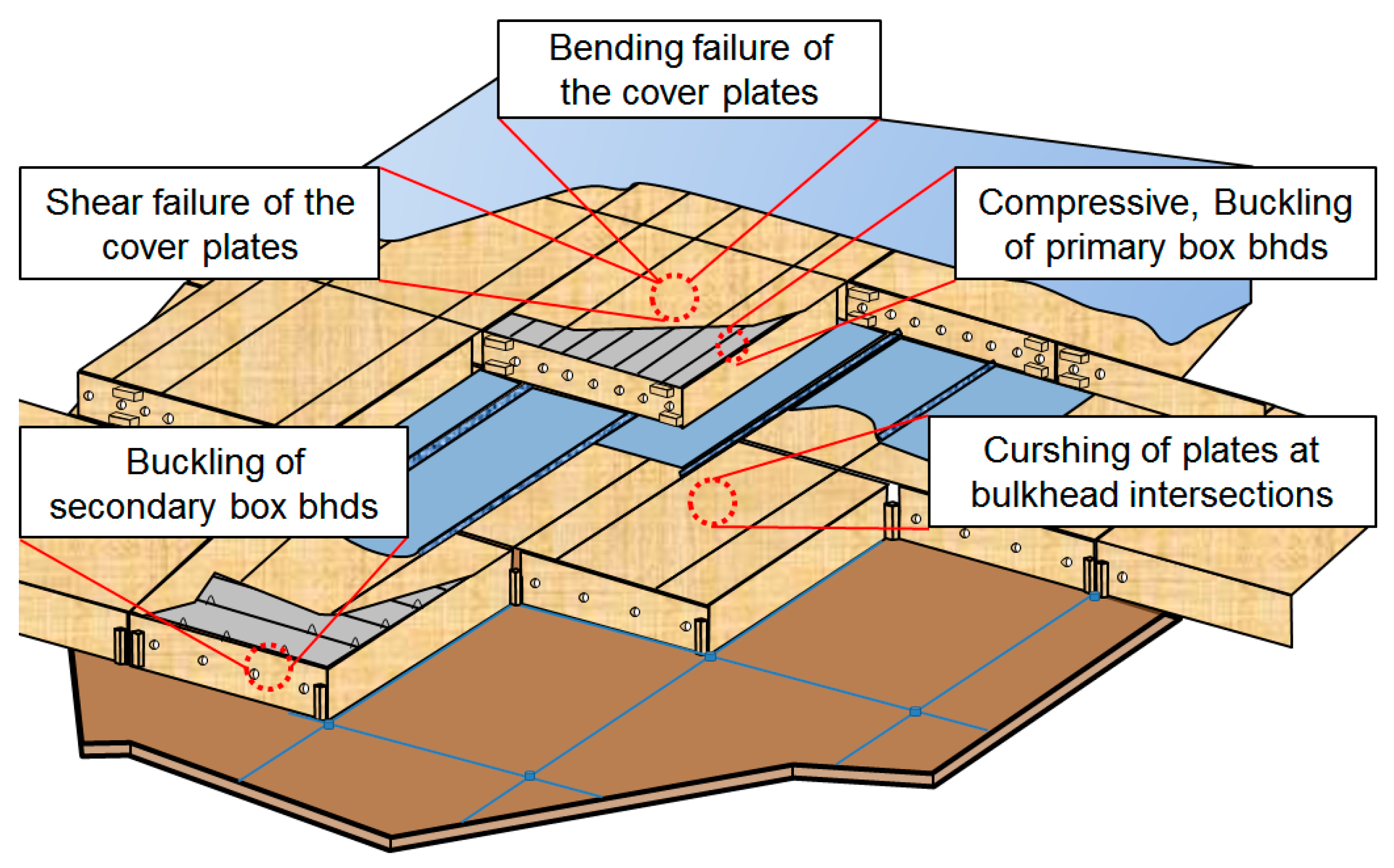
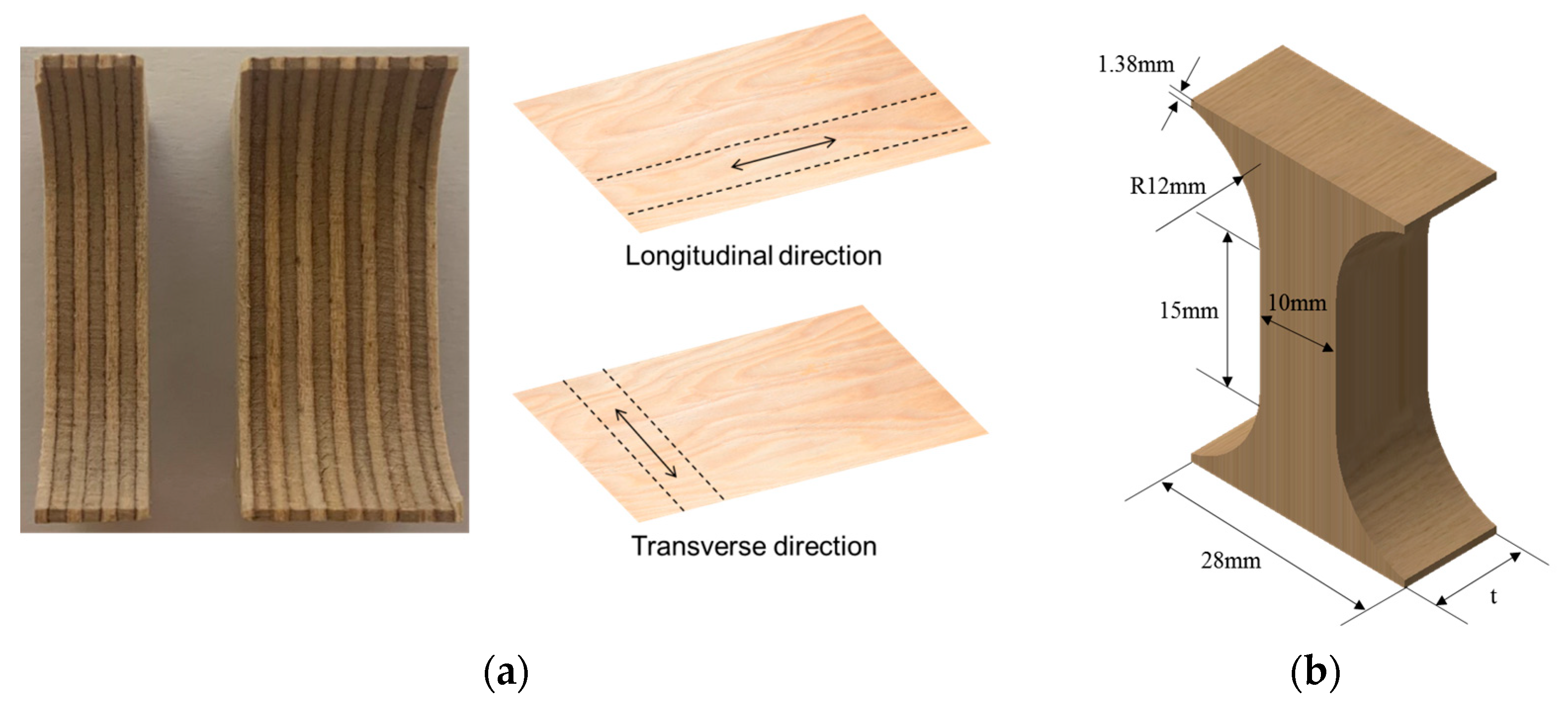

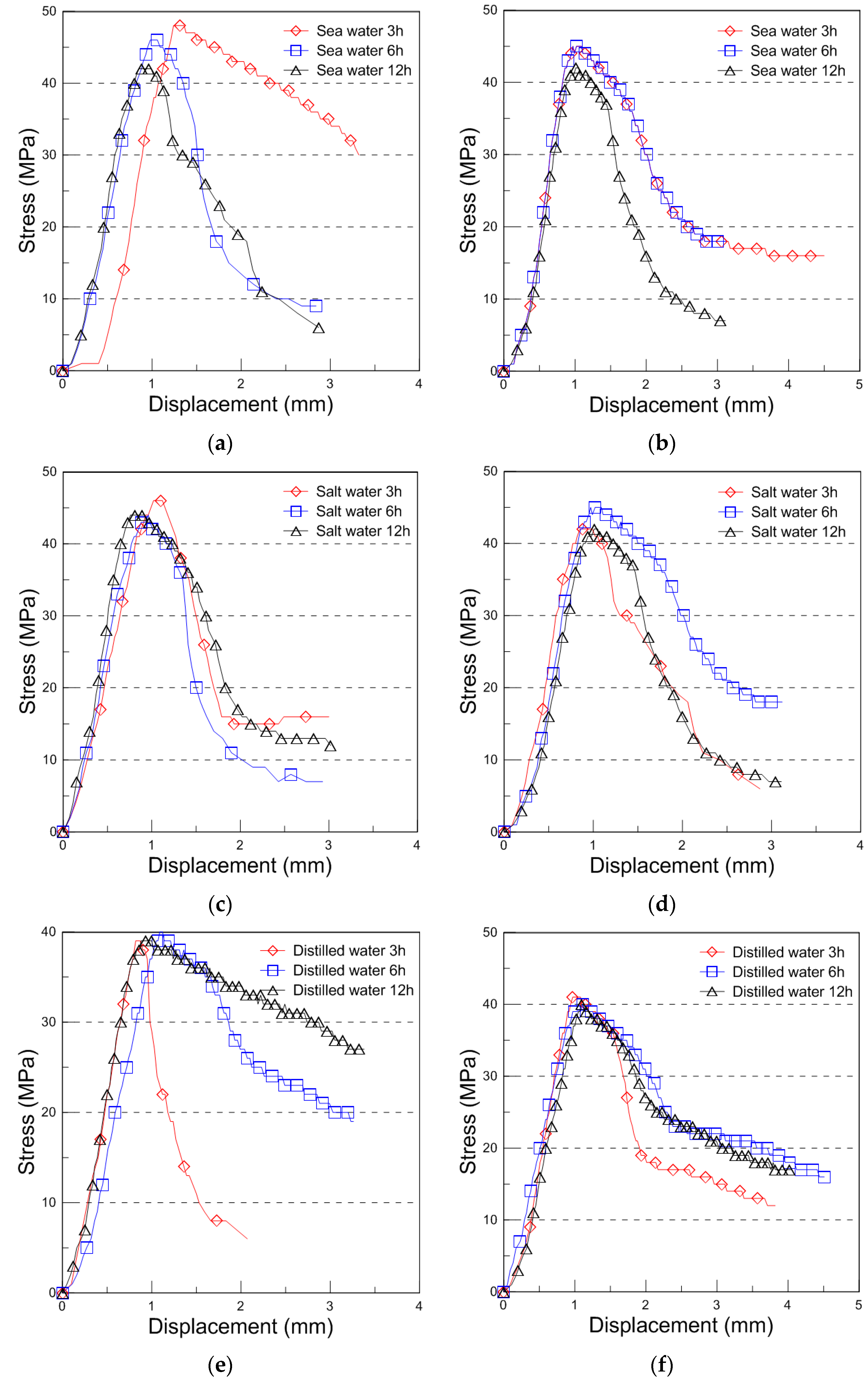
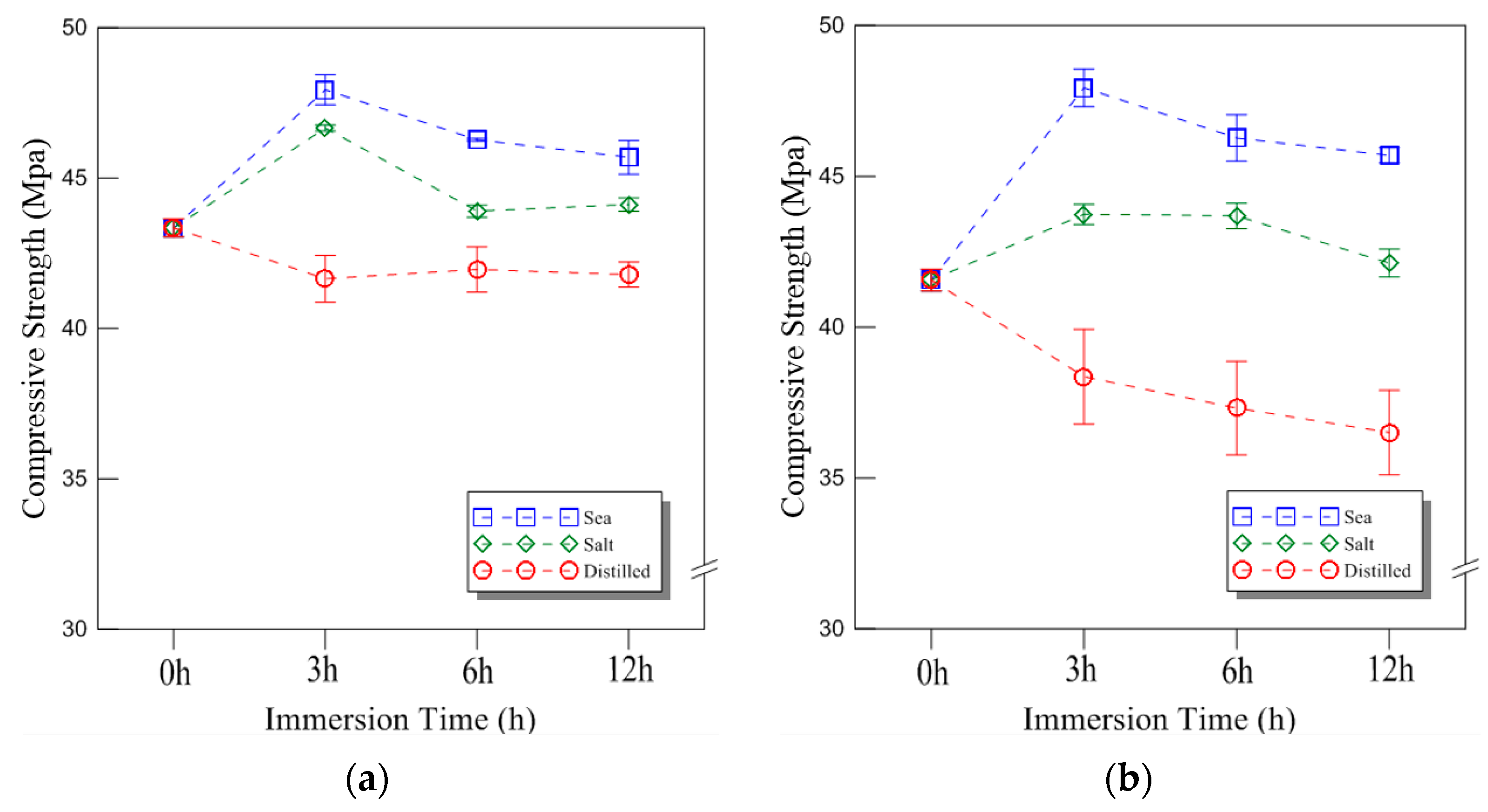


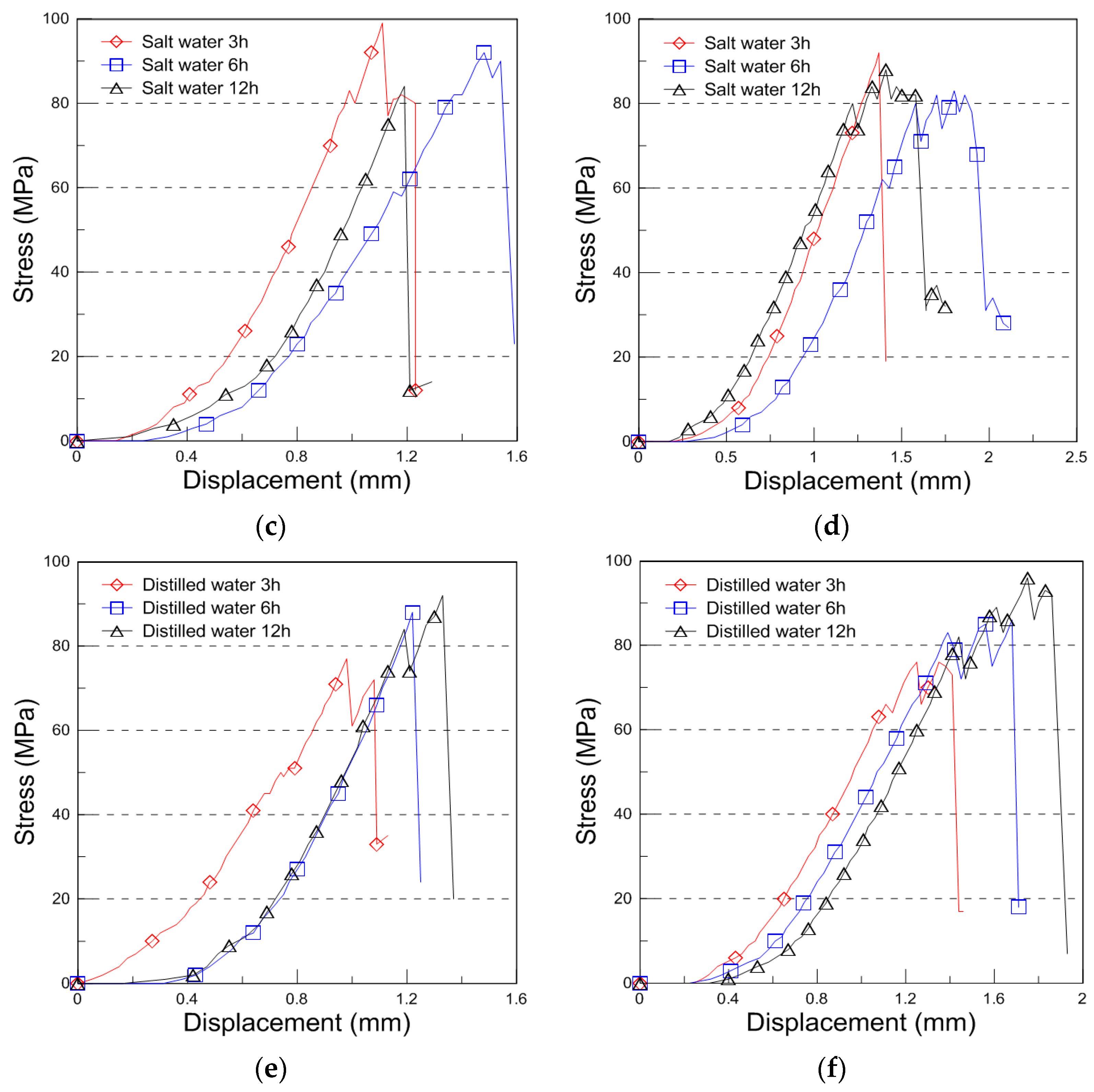
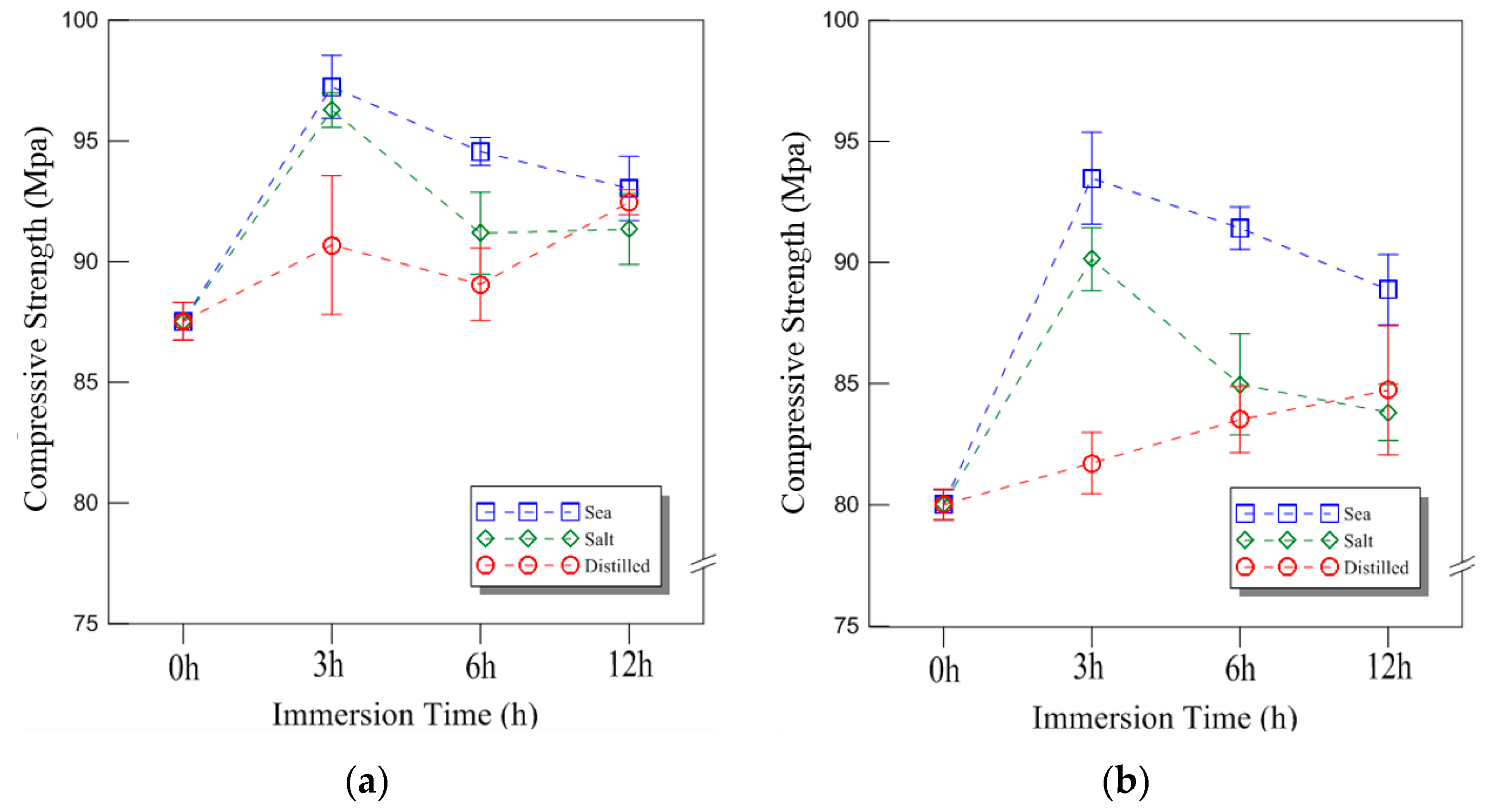

| No. | Ship/Facility Name | Damage | LNG Spill | Comment |
|---|---|---|---|---|
| 1 | (‘66) Methane Progress | No | Yes |
|
| 2 | (‘70) Arctic Tokyo | Yes | No |
|
| 3 | (‘78) Khannur | Yes | No |
|
| 4 | (‘85) Ramdane Abane | Yes | No |
|
| 5 | (‘90) Bachir Chihani | Yes | No |
|
| 6 | (‘93) Indonesian LNG Facility | No | No |
|
| 7 | (‘13) Kisarazu Ko Offshore Beacon | Yes | No |
|
| Process | System Failure | Cause | Effect |
|---|---|---|---|
| Panel installation |
|
|
|
| NH3 test for LNG cargo |
|
|
|
|
|
| |
| Membrane installation |
|
|
|
|
|
| |
|
|
| |
|
|
|
| Number | Specimen Type | Temperature | Thickness (mm) | Immersion (h) |
|---|---|---|---|---|
| 1 | Untreated | Room temperature | 9 | 3 6 12 |
| 2 | Seawater | |||
| 3 | Saltwater | Cryogenic | 18 | |
| 4 | Distilled water |
| Type | Thickness (mm) | Immersion (h) | Compressive Strength (MPa) |
|---|---|---|---|
| Untreated | 9 | 0 | 43.5 ± 0.4 |
| 18 | 0 | 41.7 ± 0.4 | |
| Seawater | 9 | 3 | 47.9 ± 0.5 |
| 6 | 46.2 ± 0.2 | ||
| 12 | 45.6 ± 0.6 | ||
| 18 | 3 | 47.1 ± 0.7 | |
| 6 | 45.9 ± 0.7 | ||
| 12 | 43.1 ± 0.3 | ||
| Saltwater | 9 | 3 | 46.6 ± 0.1 |
| 6 | 43.9 ± 0.2 | ||
| 12 | 44.1 ± 0.3 | ||
| 18 | 3 | 43.8 ± 0.3 | |
| 6 | 43.8 ± 0.4 | ||
| 12 | 42.2 ± 0.4 | ||
| Distilled water | 9 | 3 | 41.7 ± 0.8 |
| 6 | 42.0 ± 0.8 | ||
| 12 | 41.9 ± 0.4 | ||
| 18 | 3 | 38.4 ± 1.6 | |
| 6 | 37.4 ± 1.6 | ||
| 12 | 36.5 ± 1.5 |
| Type | Thickness (mm) | Immersion (h) | Compressive Strength (MPa) |
|---|---|---|---|
| Untreated | 9 | 0 | 87.5 ± 0.8 |
| 18 | 0 | 80.0 ± 0.6 | |
| Seawater | 9 | 3 | 97.3 ± 1.3 |
| 6 | 94.6 ± 0.5 | ||
| 12 | 93.1 ± 1.3 | ||
| 18 | 3 | 93.5 ± 2.0 | |
| 6 | 91.6 ± 0.9 | ||
| 12 | 88.9 ± 1.3 | ||
| Saltwater | 9 | 3 | 96.3 ± 0.5 |
| 6 | 91.1 ± 1.8 | ||
| 12 | 91.4 ± 1.5 | ||
| 18 | 3 | 90.1 ± 1.3 | |
| 6 | 84.9 ± 2.1 | ||
| 12 | 83.8 ± 1.2 | ||
| Distilled water | 9 | 3 | 90.6 ± 2.8 |
| 6 | 89.0 ± 1.5 | ||
| 12 | 92.5 ± 0.5 | ||
| 18 | 3 | 81.7 ± 1.3 | |
| 6 | 83.5 ± 1.5 | ||
| 12 | 84.8 ± 2.3 |
Disclaimer/Publisher’s Note: The statements, opinions and data contained in all publications are solely those of the individual author(s) and contributor(s) and not of MDPI and/or the editor(s). MDPI and/or the editor(s) disclaim responsibility for any injury to people or property resulting from any ideas, methods, instructions or products referred to in the content. |
© 2025 by the authors. Licensee MDPI, Basel, Switzerland. This article is an open access article distributed under the terms and conditions of the Creative Commons Attribution (CC BY) license (https://creativecommons.org/licenses/by/4.0/).
Share and Cite
Choi, J.-M.; Kim, H.-T.; Kim, T.-W.; Lee, D.-H.; Kim, J.-H.; Lee, J.-M. Analysis of the Compressive Behavior of Plywood Under Seawater and Cryogenic Temperature Effects. Materials 2025, 18, 1836. https://doi.org/10.3390/ma18081836
Choi J-M, Kim H-T, Kim T-W, Lee D-H, Kim J-H, Lee J-M. Analysis of the Compressive Behavior of Plywood Under Seawater and Cryogenic Temperature Effects. Materials. 2025; 18(8):1836. https://doi.org/10.3390/ma18081836
Chicago/Turabian StyleChoi, Jong-Min, Hee-Tae Kim, Tae-Wook Kim, Dong-Ha Lee, Jeong-Hyeon Kim, and Jae-Myung Lee. 2025. "Analysis of the Compressive Behavior of Plywood Under Seawater and Cryogenic Temperature Effects" Materials 18, no. 8: 1836. https://doi.org/10.3390/ma18081836
APA StyleChoi, J.-M., Kim, H.-T., Kim, T.-W., Lee, D.-H., Kim, J.-H., & Lee, J.-M. (2025). Analysis of the Compressive Behavior of Plywood Under Seawater and Cryogenic Temperature Effects. Materials, 18(8), 1836. https://doi.org/10.3390/ma18081836








